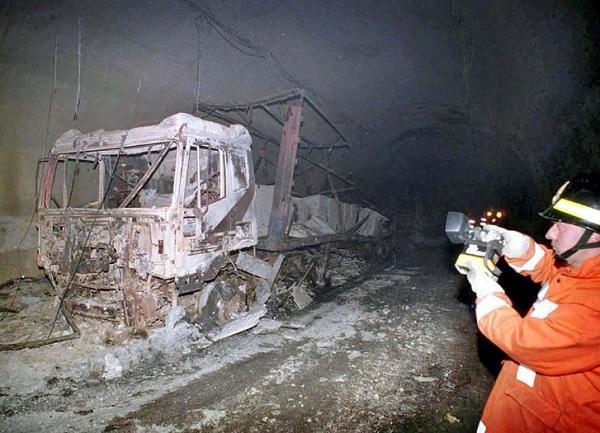The Mont Blanc Tunnel fire of 1999 was one of the worst road tunnel disasters in the history of Europe. The disaster occurred on March 24, 1999, in the Mont Blanc Tunnel, which connects the Italian town of Courmayeur to the French town of Chamonix, and claimed the lives of 39 people. The tragedy remains one of the most significant events in the history of road tunnel safety and serves as a reminder of the dangers faced by travelers and the importance of tunnel safety.
The Mont Blanc Tunnel is a major road tunnel that provides a crucial link between France and Italy, allowing for the transportation of goods and people between the two countries. On the evening of March 24, 1999, a fire broke out in the tunnel, killing many of the travelers and injuring others. The cause of the fire was later determined to be a collision between two vehicles, which resulted in a fuel spill that ignited.
The response to the disaster was immediate, with rescue teams and first responders rushing to the tunnel to assist in the search and rescue efforts. However, the conditions in the tunnel were treacherous, with the fire having spread quickly and the risk of further explosions hindering the rescue efforts. Despite the efforts of the rescuers, many of the travelers remained trapped in the tunnel, and the final death toll was reported to be 39 people.
The Mont Blanc Tunnel fire had a profound impact on the road tunnel industry and the wider transportation sector. The tragedy was a stark reminder of the dangers faced by travelers in road tunnels and the need for increased safety measures. The disaster also highlighted the inadequate safety regulations in place at the time, leading to a public outcry and calls for reform.
In the aftermath of the disaster, a number of inquiries were held to determine the cause of the fire and to make recommendations for improving safety in road tunnels. The inquiries found that the primary cause of the disaster was the collision between the two vehicles, which resulted in a fuel spill. They also found that the tunnel had inadequate fire-fighting systems and ventilation, and that the rescuers had not been adequately trained to deal with such a disaster.
The Mont Blanc Tunnel fire resulted in significant changes to the road tunnel industry. New safety regulations were introduced, including improved fire-fighting systems, the mandatory use of safety equipment, and increased training for rescuers. These changes helped to prevent similar disasters in the future and to improve the safety of travelers in road tunnels.
The Mont Blanc Tunnel fire also had a lasting impact on the local communities in France and Italy. The loss of so many lives in a single disaster was devastating, and many families were left without a loved one. The tragedy brought the communities together, however, and helped to raise awareness of the importance of tunnel safety.
In conclusion, the Mont Blanc Tunnel fire of 1999 was a tragedy that claimed the lives of 39 people and had a profound impact on the road tunnel industry and the wider transportation sector. The disaster serves as a reminder of the dangers faced by travelers in road tunnels and the importance of tunnel safety. The reforms that were introduced in the aftermath of the disaster helped to improve the safety of travelers and to prevent similar tragedies from occurring in the future.










